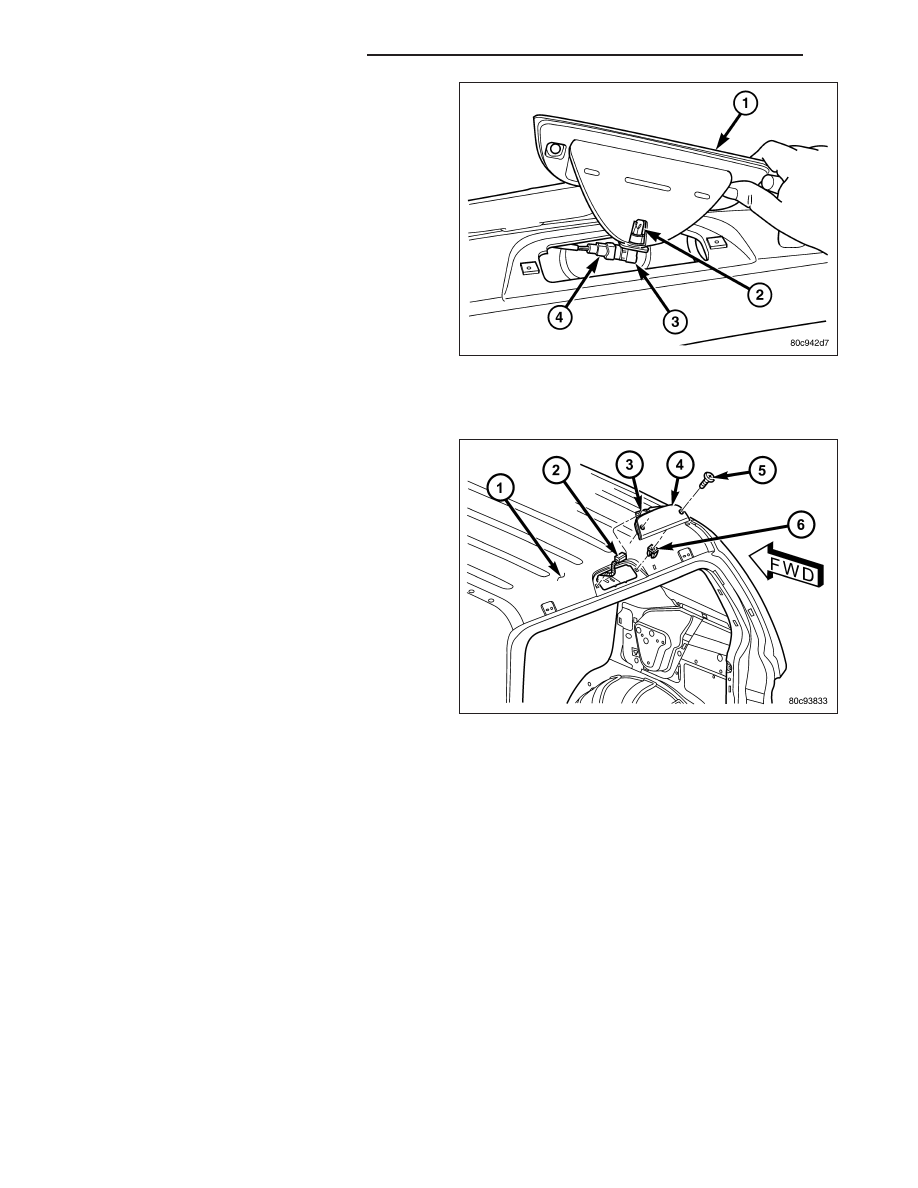Jeep Liberty KJ. Manual - part 98

1. Align the base of the bulb (2) with the socket (3).
2. Push the bulb straight into the socket until the base
is firmly seated.
3. Align the socket and bulb with the keyed opening
on the back of CHMSL housing (1).
4. Insert the socket and bulb into the housing until the
socket is firmly seated.
5. Rotate the socket clockwise about 30 degrees to
lock it into place.
6. Position the CHMSL into the opening in the rear
roof panel.
7. Install and tighten the two screws that secure the
CHMSL to the roof panel. Tighten the screws to 2
N·m (21 in. lbs.).
8. Reconnect the battery negative cable.
LAMP
1. Check to be certain that the two plastic nuts (6) are
properly positioned and in good condition on each
side of the roof panel (1) opening for the Center
High Mounted Stop Lamp (CHMSL) (4).
2. Position the CHMSL near the roof panel opening.
3. Reconnect the wire harness connector (2) to the
CHMSL socket (3).
4. Install and tighten the two screws (5) that secure
the CHMSL to the roof panel. Tighten the screws to
2 N·m (21 in. lbs.).
5. Reconnect the battery negative cable.
8L - 50
LAMPS/LIGHTING - EXTERIOR
KJ